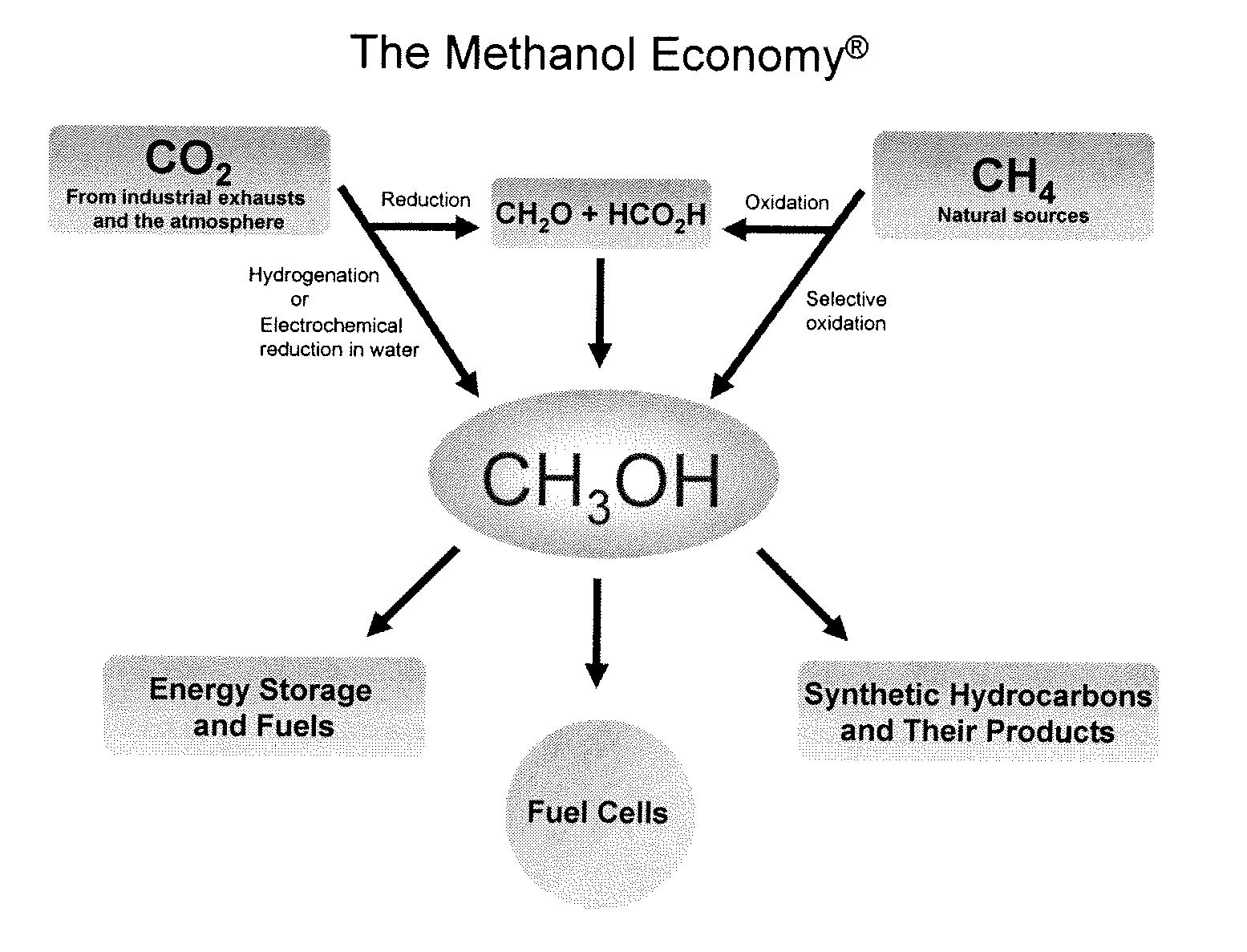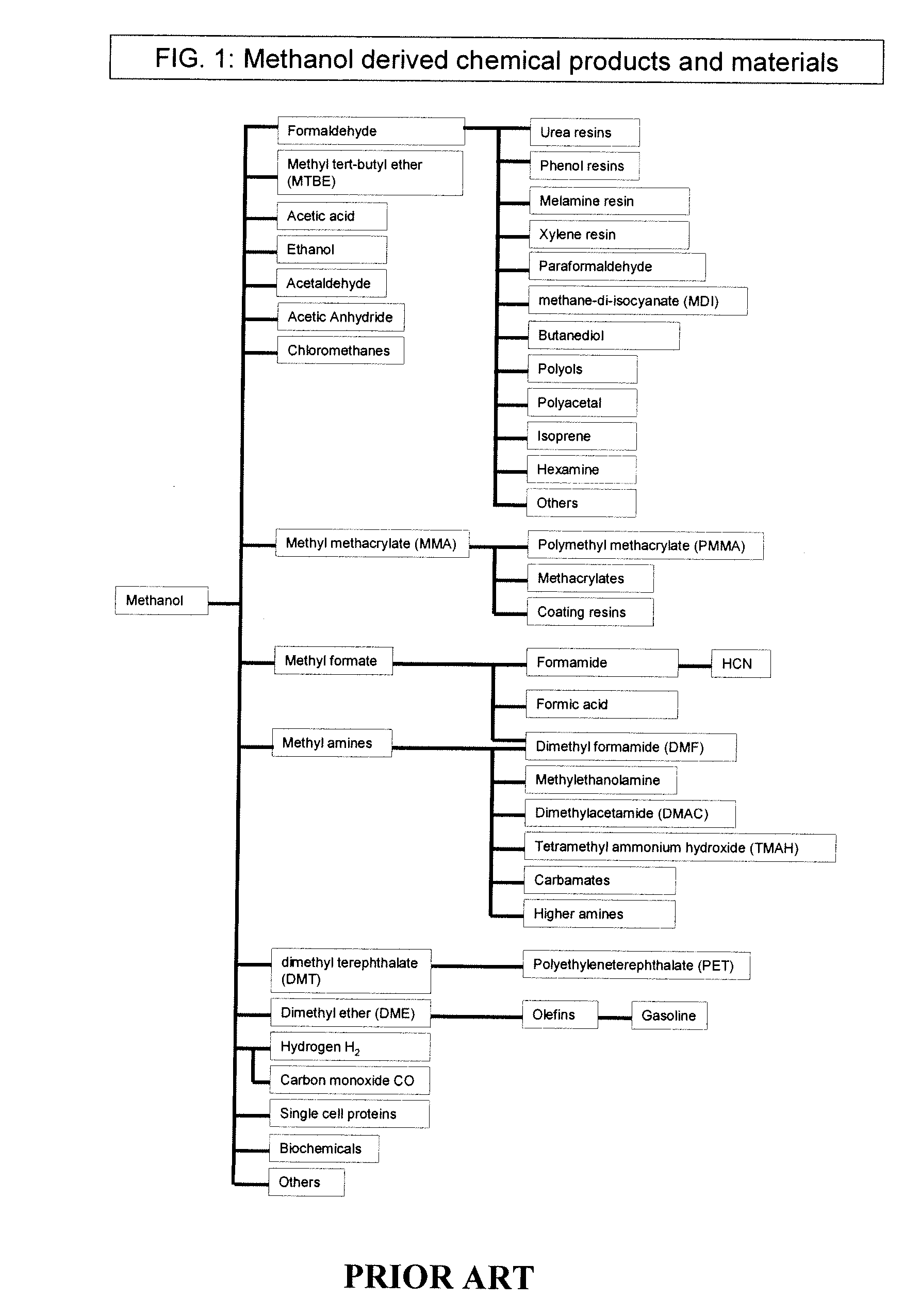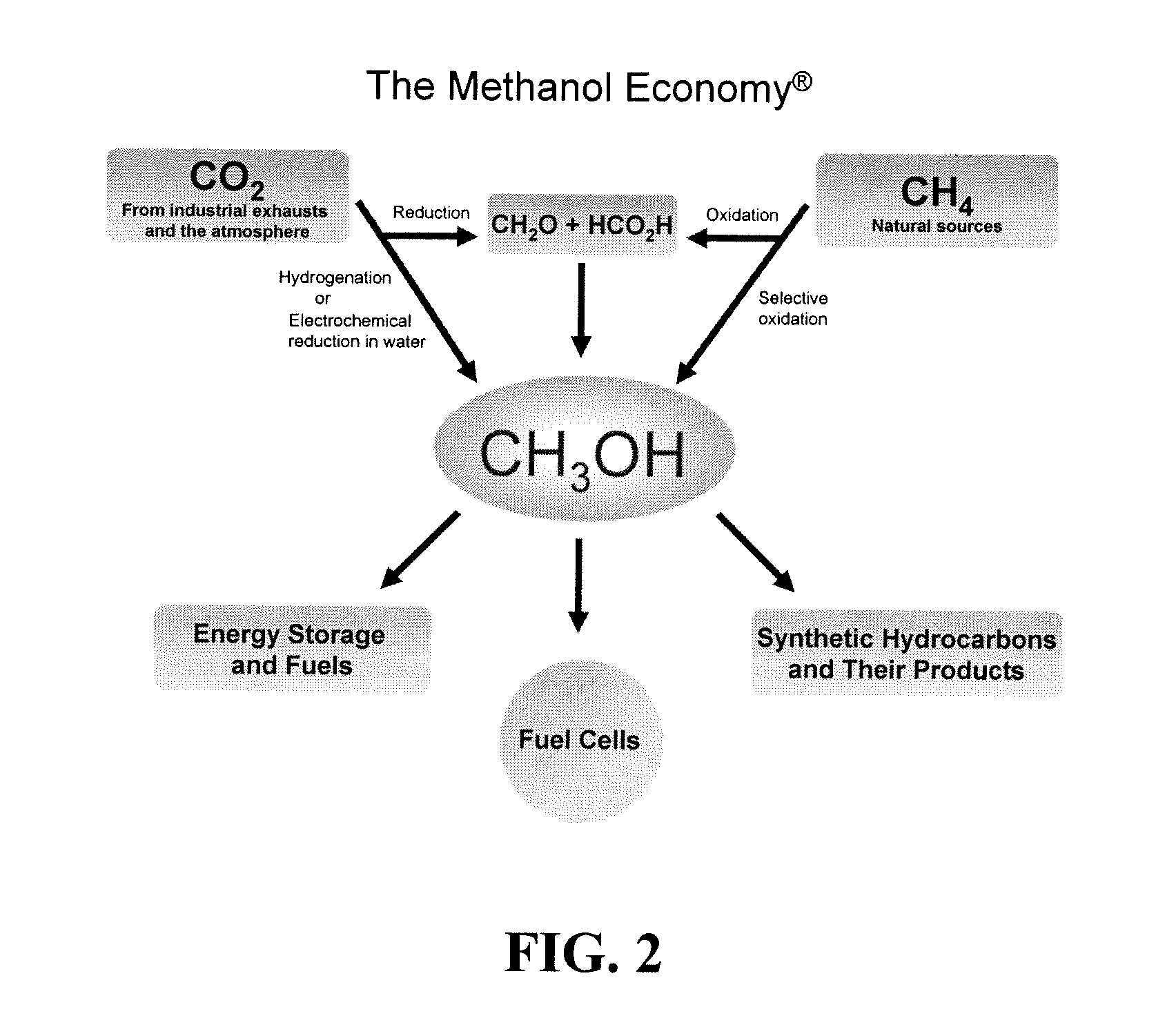Efficient and selective chemical recycling of carbon dioxide to methanol, dimethyl ether and derived products
a chemical recycling and carbon dioxide technology, applied in the direction of carbon monoxide and oxygen hydrocarbon preparation, oxygen organic compound hydrocarbon purification/separation, carbon monoxide and oxygen preparation, etc., can solve the problems of reducing the synthesis efficiency of methanol
- Summary
- Abstract
- Description
- Claims
- Application Information
AI Technical Summary
Benefits of technology
Problems solved by technology
Method used
Image
Examples
example 1
[0078] Carbon dioxide in water is known to be electrochemically reduced to formic acid and formaldehyde with methanol formed in smaller amounts while avoiding methane formation in aqueous media over Sn, Pb, In, Zn, Au, Cu, Pd and related electrodes at room temperature in the range of 40-90% current efficiency.
[0079] The above mentioned product mixture containing formic acid and formaldehyde when passed over a supported basic catalyst in a tube reactor at temperatures between 100 and 300° C. forming methanol and methyl formate in overall yield of 40 to 50%.
example 2
[0080] Carbon dioxide is reacted with a suitable carbon source (such as charcoal and the like) at temperatures of 550 to 900° C. to produce carbon monoxide in what is called the Boudouard reaction. CO then is reacted with methanol to give methyl formate and catalytically hydrogenative converted to produce a doubled amount of methanol.
example 3
[0081] Carbon dioxide is electrochemically reduced to carbon monoxide and subsequently is reacted further as in Example 7.
PUM
| Property | Measurement | Unit |
|---|---|---|
| MON | aaaaa | aaaaa |
| RON | aaaaa | aaaaa |
| boiling point | aaaaa | aaaaa |
Abstract
Description
Claims
Application Information
 Login to View More
Login to View More - R&D
- Intellectual Property
- Life Sciences
- Materials
- Tech Scout
- Unparalleled Data Quality
- Higher Quality Content
- 60% Fewer Hallucinations
Browse by: Latest US Patents, China's latest patents, Technical Efficacy Thesaurus, Application Domain, Technology Topic, Popular Technical Reports.
© 2025 PatSnap. All rights reserved.Legal|Privacy policy|Modern Slavery Act Transparency Statement|Sitemap|About US| Contact US: help@patsnap.com



